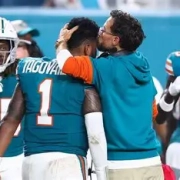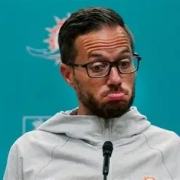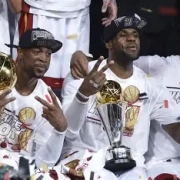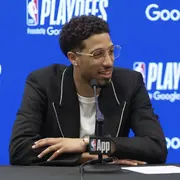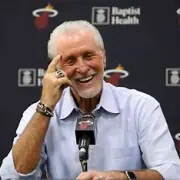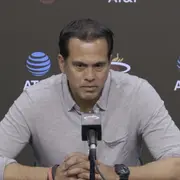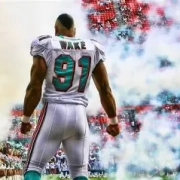Forecasting the Fins: Predicting the Dolphins’ 2025 Record (Way Too Early)
The Miami Dolphins 2025 Schedule Breakdown and Predictions
The Miami Dolphins will look to bounce back after missing the playoffs for the first time under head coach Mike McDaniel. The 2025 offseason and NFL Draft have seen Miami invest heavily in the trenches while making several low-risk, high-reward acquisitions. These moves give the Dolphins the potential to field one of the scariest front sevens in the NFL and an offense that could return to its 2023 form.
Health is improving across the roster, but there are still holes—most notably in the secondary(corners). The Dolphins must address this position before the season starts, and its current weakness factors significantly into these record predictions.
Miami is featured in five primetime games and an international showdown in Spain, signaling that the NFL has high expectations for this squad. It also highlights the Dolphins’ compelling matchups and the league’s interest in showcasing high-powered offenses.
 Miami Dolphins 2025 Game-by-Game Predictions
Miami Dolphins 2025 Game-by-Game Predictions
| WEEK | DATE | OPPONENT | LOCATION | NETWORK | TIME (ET) | RESULT |
|---|---|---|---|---|---|---|
| 1 | Sun., Sept. 7 | at Indianapolis Colts | Lucas Oil Stadium | CBS | 1:00 PM | W |
| 2 | Sun., Sept. 14 | New England Patriots | Hard Rock Stadium | CBS | 1:00 PM | W |
| 3 | Thu., Sept. 18 | at Buffalo Bills | Highmark Stadium | Prime Video | 8:15 PM | L |
| 4 | Mon., Sept. 29 | New York Jets | Hard Rock Stadium | ESPN | 7:15 PM | W |
| 5 | Sun., Oct. 5 | at Carolina Panthers | Bank of America Stadium | FOX | 1:00 PM | W |
| 6 | Sun., Oct. 12 | Los Angeles Chargers | Hard Rock Stadium | CBS | 1:00 PM | W |
| 7 | Sun., Oct. 19 | at Cleveland Browns | Huntington Bank Stadium | CBS | 1:00 PM | W |
| 8 | Sun., Oct. 26 | at Atlanta Falcons | Mercedes-Benz Stadium | CBS | 1:00 PM | W |
| 9 | Thu., Oct. 30 | Baltimore Ravens | Hard Rock Stadium | Prime Video | 8:15 PM | L |
| 10 | Sun., Nov. 9 | Buffalo Bills | Hard Rock Stadium | CBS | 1:00 PM | L |
| 11 | Sun., Nov. 16 | Washington Commanders (Spain) | Bernabéu Stadium, Madrid | NFL Network | 9:30 AM | L |
| — | Sun., Nov. 23 | BYE WEEK | — | — | — | — |
| 12 | Sun., Nov. 30 | New Orleans Saints | Hard Rock Stadium | FOX | 1:00 PM | W |
| 13 | Sun., Dec. 7 | at New York Jets | MetLife Stadium | CBS | 1:00 PM | W |
| 14 | Mon., Dec. 15 | at Pittsburgh Steelers | Acrisure Stadium | ESPN/ABC | 8:15 PM | W |
| 15 | Sun., Dec. 21 | Cincinnati Bengals | Hard Rock Stadium | NBC | 8:20 PM | L |
| 16 | Sun., Dec. 28 | Tampa Bay Buccaneers | Hard Rock Stadium | FOX | 1:00 PM | L |
| 17 | Jan. 3 or 4 | at New England Patriots | Gillette Stadium | TBD | TBD | W |
 Final Record: 11–6
Final Record: 11–6
AFC East Record: 4–2
Conference Record: 8–4
NFC Record: 3–2
 Key Wins:
Key Wins:
-
at Pittsburgh (Week 14, MNF): A statement primetime win in a cold-weather playoff-like(?) environment.
-
vs New York Jets (Week 4): An early divisional win that helped set the tone for the season.
- vs Los Angeles Chargers (Week 6): A complete team effort against a high-powered offense gave Miami a signature win and confidence heading into the midseason stretch.
 Toughest Losses:
Toughest Losses:
-
vs Washington (Madrid, Week 11): Whether it was travel fatigue or a trap game, this unexpected international loss could hurt seeding.
-
vs Buffalo (Week 10): Being swept by the Bills could cost Miami the AFC East title.
-
vs Cincinnati (Week 15): A potential playoff preview that slipped away under the lights at home.
 Playoff Outlook:
Playoff Outlook:
An 11–6 record should comfortably earn the Dolphins a Wild Card berth in a crowded AFC. If Buffalo falters down the stretch, Miami could even steal the division via tiebreakers.
The team starts hot—7–1 through Week 8—but stumbles a bit in November and December. Still, Miami is positioned to make a run, especially if it addresses the secondary and stays healthy defensively.
 Final Thoughts:
Final Thoughts:
Between favorable scheduling, manageable travel, and some soft spots in the lineup, Miami is built for a return to the postseason. Games against Carolina, Atlanta, New Orleans, and Cleveland should be wins. Combine that with at least three divisional victories, and the Dolphins’ floor is likely around 7 wins.
*Healthy Tua pushes floor to 8, giving a game barring health. *
The ceiling? If Miami can finally take a game from Buffalo and contain high-octane offenses like Baltimore, Cincinnati, Washington, and Tampa Bay, the Dolphins could push for 12+ wins and a potential home playoff game.
This season might be streaky given the layout of the schedule, but one thing’s certain—it’s going to be a fun ride.
